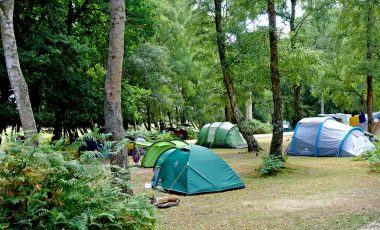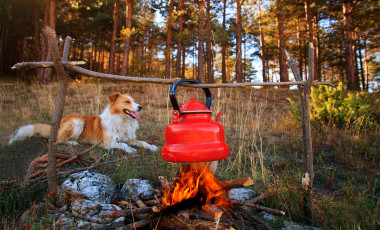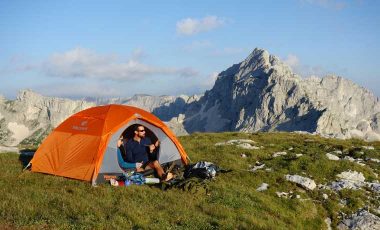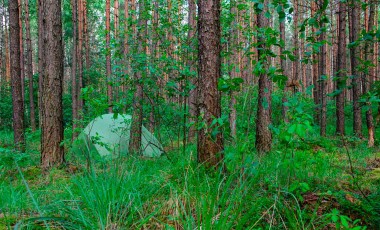Beach camping is like no other types of camping. There is something about being by the ocean that ignites a new lease of life and a kind of wild energy within me. Maybe it’s having grown up on a ‘small’ island, where there a very few truly wild and uninhabited places, that makes me feel such an affinity for the seaside. The coastline offers open space, unknown horizons and a feeling of absolute freedom unlike anywhere else. And the ever changing cycles of the tides, waves, sand formations, beach streams and weather fronts, constantly rejuvenate that spark for life at the beach. So it’s no wonder that the lure of beach camping is as enjoyable and satisfying as it sounds.
Camping at the beach is the ultimate summer getaway for families and for those after the freedom of beach life and simple living. There are a bucketload of campgrounds with oceanside pitches and beach views, but nothing really compares to waking up with only sand and sea between you and the horizon. Unfortunately, beach camping outside of designated campsites is illegal in most places, making it a bit tricky to turn your dream beach vacation into a reality.
Wild beach camping
However, wild beach camping is not entirely out of the question; a little bit of planning and research, good practice and discretion, can open up desert island-like destinations that Crusoe himself would OMG over. I spent a week sleeping on deserted beaches in Greece with no problems at all. So if you’re itching to get the unspoilt sands of the wild seaside stuck well between your toes, take a read of some things to consider before you head out:
1) Access and permissions
A big issue with wild camping in general, is that most land is owned by someone and unless you have permission to camp there, you may be breaking the law. If you have a good spot in mind, then contact the local authority or state park to find out what the deal is. It may be OK to camp there, or they might point you in the right direction to find out more.
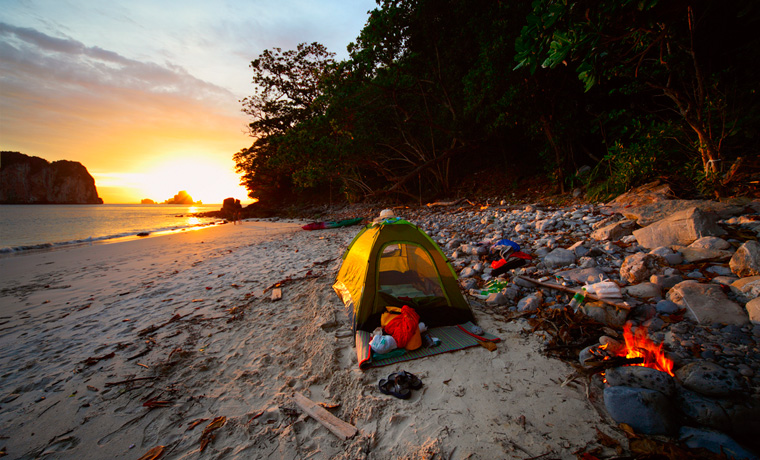
2) Tips for discrete beach camping
If you choose not to go down the route of gaining permission to camp, it’s important that you get as far away from the beaten track as possible. Going stealth, not only heightens the sense of adventure, but also lowers your chances of being asked to move on; or even worse, having to share your little piece of paradise with other people! For those who dare, these top tips for being a discrete camper might help:
Do’s:
- Consider not pitching a tent – sleep out under the stars instead.
- If you do pitch a tent, make sure it’s as far away from fluorescent as possible. Go for a subtle dark green or brown.
- Pack light – all your stuff should fit in one backpack. For some ideas of backpacking essentials, take a look at our lightweight camping checklist.
- Make sure you can’t see any houses, campsites or roads from your chosen spot.
- Check out your spot during daylight hours and if you’re concerned about being ‘spotted’ then come back to it after dark.
Don’ts:
- Don’t camp in the middle of the beach – tuck yourself next to the rocks or on the edge of the sand near the tree line.
- Don’t light a fire unless you are confident that no-one will be able to see it (or it’s glow).
- Don’t outstay your welcome – pack up your stuff in the morning so that if anyone does stumble upon your sandy setup, it’ll appear as though you’re just hanging out enjoying the sunrise.
- Don’t bring loads of friends! Keep your group small so as to keep the noise down and impact on the beach at a minimum.
3) Leave no trace
As with any camping trip, leaving no trace of your visit is essential. Aside from the environmental benefits, it also ensures that the spot can be enjoyed by others in the future. So to make your footprints in the sand as light as possible, do the following:
- Take a trowel to bury your poop, and make sure you do your business at least 100ft away from any water source.
- Take all your rubbish with you.
- Avoid camping in sand dunes that are not on official tracks – the natural shelter they offer may be appealing, but their fragile ecosystems provide habitats for a great variety of wildlife.
- Use biodegradable soap/washing up liquid.
- If you have a fire then bury the ashes and avoid leaving sooty burn marks on the rocks.
4) Setting up your camp
To make your seaside stay as dreamlike as possible, there are a more few details to consider when setting up your camp:
- Make sure you are well above the high tide level. Check the local tide charts if you are unsure, but it is usually easy to see signs of the tides on the beach – accumulated driftwood, seaweed or debris indicate the water levels of the last storm, but if in doubt, go further inland.
- The wind direction can really affect your comfort levels, so find a sheltered spot where the wind hits the back of your tent, if at all.
- If you are pitching a tent, try using storm stakes that hold better in the sand. Otherwise, you can attach your guy lines to rocks or trees to secure your tent.
- If you are camping without a tent, consider taking a tarp for a quick makeshift shelter if the weather looks like it might turn. A tarp will also provide some protection from the morning sun if you are camping in a hot spot.
- If there are bugs about, then set up a mosquito net with sticks and stakes, or fasten it under your tarp.
- Make sure you are on a groundsheet of some kind. I once had a very rude awakening from crabs coming up out of the sand underneath my sleeping bag! A groundsheet will make this tough going for the little sideways walkers, forcing them to retreat and come up elsewhere.
- If possible, locate a water source and make sure you bring means to purify the water.
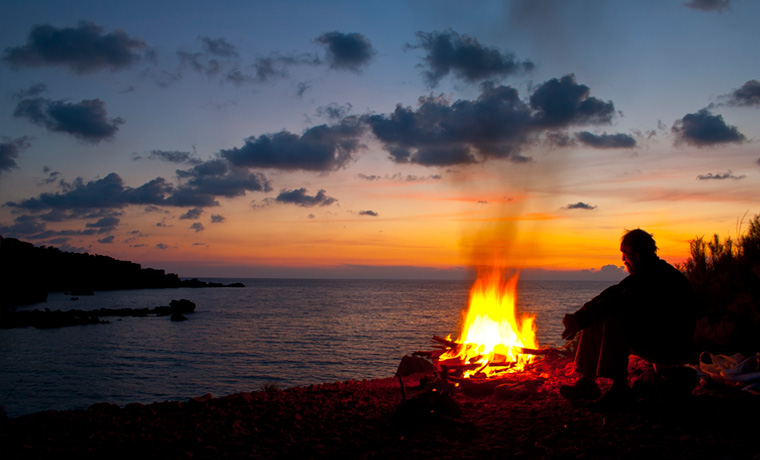
5) Campfire cooking
One of the highlights of beach camping is being able to totally relax under the hypnotic spell of the dancing campfire flames. The crackle of the fire and tranquil lapping of the ocean provide a perfect backing track to the distant cries of seagulls. Ah, so idyllic! So don’t spoil it with a second rate meal or a feeble fire. You’ll need some good embers to be able to cook on your fire, so set it up properly and you’ll soon be dishing up a first class feast:
- Dig a hole in the sand for your fire to provide a good windbreak, and if you need to put it out quickly you can easily fold sand over it (and then douse in seawater to make sure it’s totally out).
- Have lots of wood at the ready to feed the fire, with some fat logs to last the evening.
- Once you’ve got some good embers, you can get cooking. Take a look at this foil-wrapped fish recipe for a thematic maritime meal.
However you choose to get your fix of ocean life, make sure you do it with minimum impact to the beach and other users of the area. Leave no trace and be respectful, and most of all, enjoy your little corner of tranquility and go get lost in paradise.





